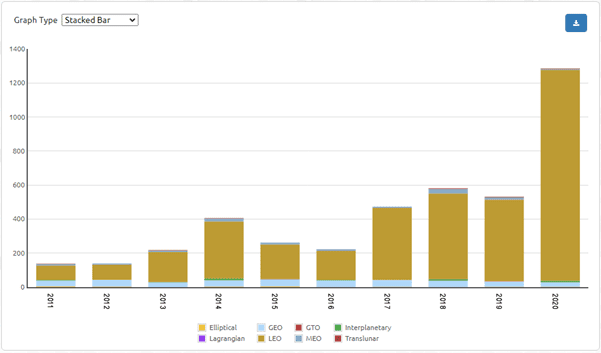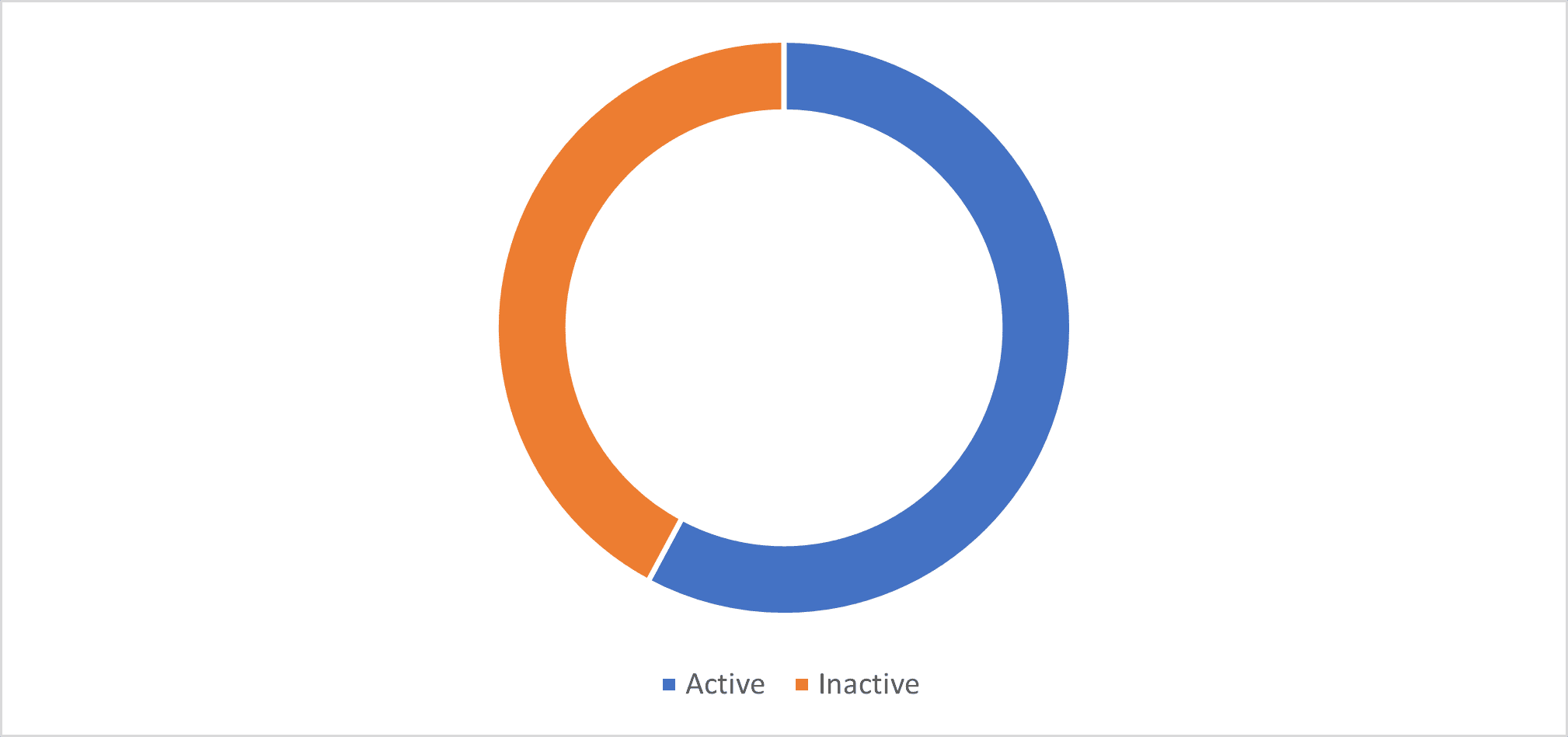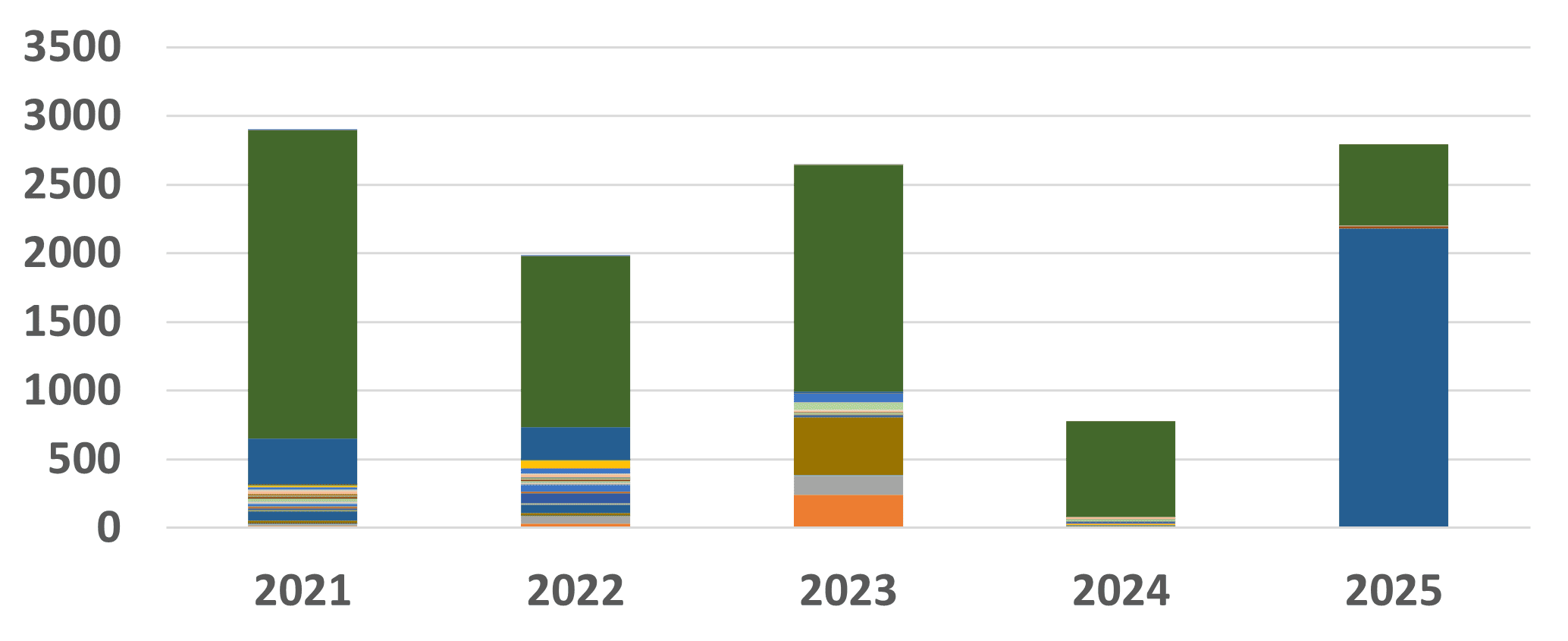The Satellite Market Analyst may be employed at a wide variety of organisations including: government (civil and military), satellite (including subsystems) or launcher manufacturing, satellite operators, consultants and finance, but while the emphasis and focus will vary, the data requirement is surprisingly common.
The key data requirement is a rich, complete and well organised satellite database such as Seradata’s online Seradata database service (formerly SpaceTrak). The data should also include future (backlog) spacecraft. Key satellite market analysis fields are:-
- Satellite Name or NORAD ID or INTERNATIONAL number or ITU Filing
- Owner / Operator, including country and category
- Mission, including secondary missions
- Satellite orbit and position changes
- Life cycle status (i.e. backlog, active, inactive etc)
- Satellite and therefore population history
- Launch date (past or future), site, provider, arranger and vehicle
- Launch vehicle including stages and engines
- Launch outcome
- Mass category and satellite mass (wet and dry)
- Sector (civil, commercial, military)
- Design/mission life
- Expected operational life
- Satellite construction price
- Launch and satellite prices
- Constellation (sister spacecraft)
- Satellite power and dimensions
- Satellite payload, including capability:-
- Satellite communications bands and frequencies (linked ITU filings)
- Earth observation sensors with bands, swath and resolution
- Navigation payloads
- Science payloads
- SIG and ELINT payloads
- Satellite subsystems:-
- Propulsion, including thruster specification
- Antenna
- Batteries
- Solar arrays
With this data set and appropriate tools, the analyst can build a market picture from the bottom up, including satellite prices.
Here we present four typical use case examples for satellite market analysis.
CASE 1: Spacecraft Orbital Attempts by Year (Stacked by Orbit)
A common requirement is historic spacecraft launched numbers by year, grouped by a metric of interest, e.g. orbit, mass or owner country. Seradata’s online platform can support this in two ways via the Seradata Database Query Tool or via the higher level Launch and Satellite Market Analysis tool with the capability to count launches or spacecraft and the concept of time range and period built in. The latter is very easy to use but is less granular and less flexible than the Query Tool. Here is an example output from the Seradata Launch Market Analysis tool.
All Spacecraft Orbital Launch Attempts Since 2011, by Orbit. Source: Seradata database
CASE 2: Active C band GEO Satellites In Orbit between 0 and 20 Degrees East
Analysis of the GEO belt. In this example we have used the Seradata Query Tool to search for Active GEO satellites between and zero and twenty degrees east with a C band communications payload. The results of this query are shown in the interactive table screen shot below.
Active GEO C band satellites, zero to twenty degrees east. Source: Seradata database
From here the satellite market analyst may drill down to the satellite general and payload capability detail, including number of transponders, and gateway/user frequency ranges (ITU brought into use (BIU)).
CASE 3: In-orbit Satellite Population
With the increasing concern about the space environment many organisations need to know, what’s in orbit, who owns it and what’s its status? A simple query using Seradata Query Tool reveals the answer in seconds. However, be careful, while Seradata logs satellite break ups, it still shows the satellites as one entity even if, in reality, it is now many fragments.
All satellites in-orbit, by status Source: Seradata database
CASE 4: Future Spacecraft Launches
Perhaps the most important requirement of the Satellite Market Analyst is to look forward in time. What’s in the pipeline and what are the trends? Seradata add spacecraft to the Seradata database if they are likely to be financed. So the database can display all the credible announced spacecraft with the future intended launch date.
The example below reveals that at June 2021, 69 nations have or will launch in 2021 or in the succeeding years 2022 – 2025.
2021 + Future Spacecraft Launch Intent by Owner Country. Source: Seradata database
The Seradata launch database is used by launch providers, manufacturers, governments, operators, and consultants for satellite market analysis, including satellite prices. Discover more information about Seradata, here.




